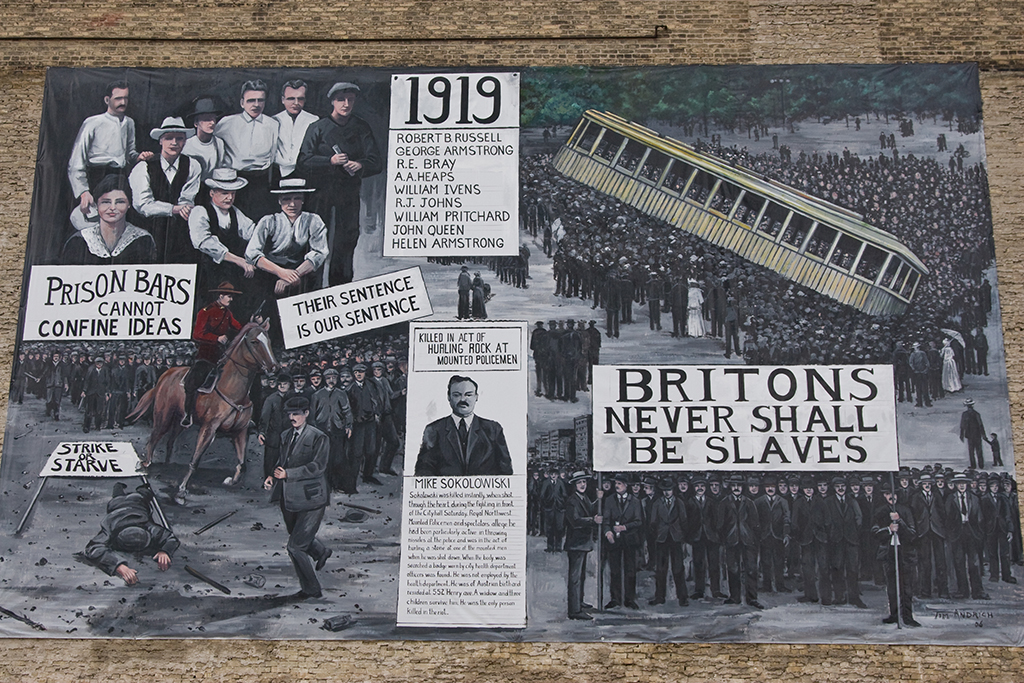This story is the last in a two-part retrospective series on the Winnipeg General Strike of 1919. In this installment, we take a closer look at the factors and causes which contributed to the angst, anger and mobilization of pro and con strike forces.
The Winnipeg General Strike (WGS), which took place 100 years ago, was a significant event in the history of labour relations in Winnipeg and Canada.
The WGS was inevitable. It was the result of a complex series of interrelated international, national and local tensions and conflicts, some of which had been simmering for years. They came together and ignited at a time when economic and social relations, which were very different from today, were being bent out of shape by unprecedented global disruption.
In Russia, militant Bolsheviks seized power in 1917 with the goal of creating a “dictatorship of the proletariat.” In 1918, they murdered the Russian royal family and fought forces, some of whom came from Canada, opposed to them.
The Communist takeover of Russia frightened governments and citizens everywhere in the western world, especially when it became known that the Bolsheviks wanted to spread their ideology to the rest of the world.
In fact, they briefly held power in Hungary, and were threatening to take control of post-war Germany. The Bolshevik victory in Russia scared most people in the west, but it also had its admirers, some in the ranks of labour.
Unlike the nervous, edgy mood at the end of the war, most of Canada entered the conflict enthusiastically and determined to win.
The Canadian government sought maximum freedom of action to pursue the war effort, beginning in 1914, when it declared the War Measures Act.
The Act included powers of censorship, as well as extensive authority to arrest, detain, exclude and deport anyone they considered dangerous.
As the war proceeded, the government’s list of undesirables grew; thousands of foreign-born people were interned and imprisoned.
At the end of the war, “returned soldiers” — demobilized veterans — ranged through Winnipeg, demanding expressions of loyalty from anyone they suspected were “foreign aliens.”
The war had a profound impact on the labour movement in Winnipeg and Canada. The transfer of millions of workers into the military and the demand for increased production gradually improved the position of labour, which won some important concessions from the Manitoba government.
By the end of the war, Manitoba had some of the most progressive labour legislation in North America, including a minimum wage for female workers.
Although the new laws did not bring tranquillity to labour relations in the province, workers believed they had at least some support from the provincial government whenever they duked it out with employers.
The war also brought a new radicalism to Canadian labour. Influenced by an influx of workers from Britain, who held new views of unionism and class struggle, labour leaders became more sympathetic to socialist ideas.
One of the more unpleasant features of the WGS was its undertones of ethnic and religious prejudice.
Winnipeg was run by an Anglo-Protestant elite of self-made men who saw civic affairs as an extension of their business activities and they had no intention of letting go the reins of power. They worked downtown and lived in leafy neighbourhoods in south Winnipeg.
The labour elite, many of whom had immigrated to Winnipeg from British industrial centres, tended to be less parochial than the commercial elite and more open to new ideas. They lived in their own neighbourhoods, most of which were further south or west of their employers’ homes.
Many of the new immigrants to Winnipeg had come from central and eastern Europe. They lived almost exclusively in the crowded North End, also called New Jerusalem. Lying north of the massive CPR freight yards, the North End had limited access to the rest of the city.
Its residents were looked down on by their fellow Winnipeggers for being poor and different and because their loyalty to the war effort was suspect.
Wherever they lived and whatever they did for a living, Winnipeggers in the hundreds died in the 1918-19 Spanish Flu epidemic, adding a desperate edge to the already agitated public mood.
That was the world of 100 years ago. But the world has changed, and so has Winnipeg.
Unions are common. Work disruptions are rare and most are settled quickly.
The centre-left NDP takes turns with the centre-right Progressive Conservatives running the province.
The CPR freight yards and the North End still exist, but people of all faiths, ethnicities and races live all over the city.
And, perhaps most importantly, Winnipeggers have not just completed taking part in a long, exhausting war that was bleeding treasure and lives.
The author would like to acknowledge and thank three western Canadian historians and writers for generously sharing their knowledge of the Winnipeg General Strike: Allen Levine (Winnipeg), David Bercuson (University of Calgary) and Daniel Francis (North Vancouver).

1/2
PROVINCIAL ARCHIVES OF MANITOBA, FOOTE COLLECTION











Recent Comments